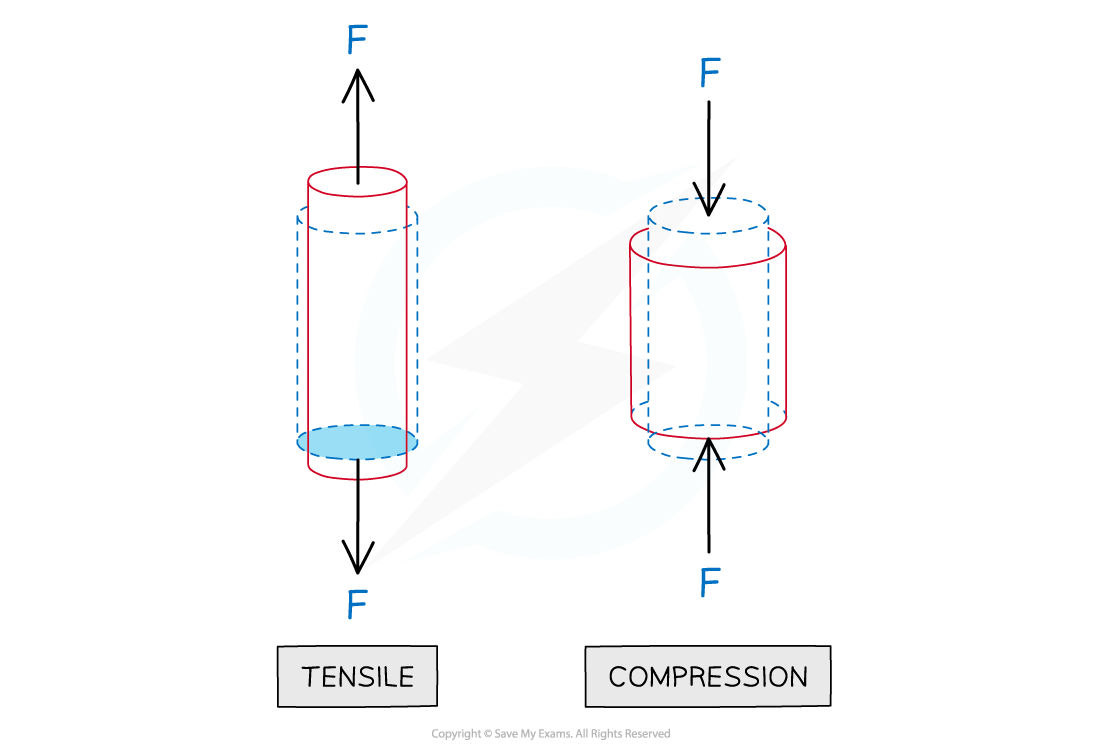Stress, Strain & The Young Modulus (Edexcel International AS Physics) : Revision Note
Stress & Strain
Stress
Stress is the applied force per unit cross sectional area of a material
Forces can be;
Tensile forces, which pull on an object and extend it
Compressive forces, which push onto an object and compress (or squash) it

The equation for stress is the force per unit area, and so the units are N m−2, or Pascals, the same unit as pressure

Stress equation
The ultimate tensile stress is the maximum force per original cross-sectional area a wire is able to support until it breaks
Strain
Strain is the extension per unit length

Strain is the ratio of the extension (or compression) and the original length
This is a deformation of a solid due to stress in the form of elongation or contraction
Note that strain is a dimensionless unit because it’s the ratio of lengths

Strain equation
The Young Modulus
Young Modulus
The Young modulus (sometimes called Young's Modulus) is the measure of the ability of a material to withstand changes in length with an added load ie. how stiff a material is
This gives information about the elasticity of a material
The Young Modulus is defined as the ratio of stress and strain

Young Modulus equation
Its unit is the same as stress: Pa (since strain is unitless)
Just like the Force-Extension graph, stress and strain are directly proportional to one another for a material exhibiting elastic behaviour

A stress-strain graph is a straight line with its gradient equal to Young modulus
The gradient of a stress-strain graph when it is linear is the Young Modulus
Worked Example
A metal wire that is supported vertically from a fixed point has a load of 92 N applied to the lower end.
The wire has a cross-sectional area of 0.04 mm2 and obeys Hooke’s law.
The length of the wire increases by 0.50%.What is the Young modulus of the metal wire?
A. 4.6 × 107Pa
B. 4.6 × 1012 Pa
C. 4.6 × 109 Pa
D. 4.6 × 1011 Pa

Examiner Tips and Tricks
To remember whether stress or strain comes first in the Young modulus equation, try thinking of the phrase ‘When you’re stressed, you show the strain’ i.e. Stress ÷ strain.

You've read 0 of your 5 free revision notes this week
Sign up now. It’s free!
Did this page help you?
